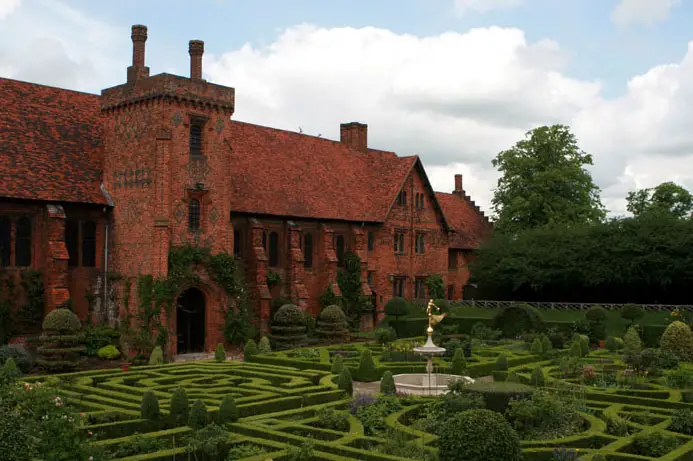 I know it's not Tudor but today is the 950th anniversary of the Battle of Hastings in 1066 so regular contributor Heather R. Darsie has written this factfile for us.
I know it's not Tudor but today is the 950th anniversary of the Battle of Hastings in 1066 so regular contributor Heather R. Darsie has written this factfile for us.
The King
Edward II – King of England. Known as the Confessor. Died childless; cousin of William the Bastard. In 1051 Edward promised William that William would inherit the throne upon Edward’s death. Edward, when close to death in early 1066, told Harold that Harold would inherit the throne from Edward.
The Claimants
Harold Godwineson – Most wealthy and powerful man in England, more so than the King himself. Anglo-Saxon. Harold was granted the Crown of England while King Edward was dying. Harold acceded the throne in January 1066.
William the Bastard – Product of an affair between Duke Robert I of Normandy and a peasant woman named either Herleva or Arlette. Duke Robert had no legitimate sons, so William the Bastard became Duke Robert’s heir and inherited the territory in 1035.
The Anglo-Saxons
Originally Germanic tribes that shifted to England some centuries before, bringing their language and culture with them. The Anglo-Saxons laid the foundation for the English language.
The Normans
Viking settlers of northern France who assimilated into Francophone culture. The territory of Normandy was established by the Viking settlers. The Normans came to rule Normandy, though the territory remained subject to the French Crown.
The Forces
Harold’s Army – Size is disputed, though some put it at 5,000 to 7,000 men, or perhaps even upwards of 14,000 men. It was comprised of housecarls, who were nobles from the King’s household, and fyrds, who were local militia. They had very few archers and a small cavalry. The English army boasted mainly infantrymen.
William’s Army – Comprised of Norman-French, men from Poitou, Maine, Flanders, Anjou, Boulogne, and Picardy. Well-organized. They had archers and a goodly-sized cavalry. William also had an infantry force. The size of William’s army is disputed as well, but is put at approximately 5,000 to 7,000 men as well, and maybe up to 10,000. It would seem that William’s army was smaller than Harold’s.

Harold and William
The Battle
Multiple conflicting accounts exist about the specific details of the Battle of Hastings. It is agreed that the battle took place on 14 October 1066 from approximately 9:00 in the morning to 6:00 in the evening, and it was bright that day. The battle was fought north of Hastings, near the town of Battle, East Sussex, England. William’s forces were arrayed in three sections, whereas Harold’s were a solid line. Harold’s forces were uphill from William’s, which proved mostly effective against William’s archers. Also, because Harold did not meaningfully have archers, William’s forces were unable to re-use Anglo-Saxon arrows and were in danger of running out of ammunition.
William lost two or three horses while fighting that day. Harold managed to hold on through most of the fight, ultimately dying toward the end of the day. His exact way of death is disputed, with Harold dying from either an arrow through the eye or being cut down by sword. Or perhaps both. The arrow-through-the-eye became the most popular tale some years later.
After Harold’s death, the English crumpled. The housecarls in the shield wall had already traded out for the less-skilled fyrds, who quickly broke ranks after Harold’s demise. It was over for the English, and William thought he was now King of England.
The Outcome
Not willing to give into William, now the Conqueror, so easily, Edgar the Æthling was proclaimed King. William then marched on London, and after more battles, the English nobles submitted to him. He was crowned King of England on Christmas Day of 1066.
Heather R. Darsie lives in the United States with her family and three parrots. She works in the legal field, with a focus on children. She obtained a Bachelor of Arts degree in German Languages and Literature, then a Juris Doctorate in American jurisprudence, and studied abroad in Costa Rica and France. Heather has always loved history. She first became acquainted with Elizabeth I when she was in middle school and chose to write a book report about her. Since then, she has always held an interest in the Renaissance and its numerous enigmatic citizens, with particular focus on the history of England and Italy. She is currently working on a book on the heraldry of Tudor women and is also researching Anne of Cleves.
Sources & Suggested Reading
- Lawson, M. K. The Battle of Hastings: 1066, Stroud, UK: Tempus (2002).
- “Battle of Hastings.” http://www.history.com/topics/british-history/battle-of-hastings Retrieved 7 October 2016.
- “The Battle of Hastings.” http://www.history.com/this-day-in-history/the-battle-of-hastings Retrieved 7 October 2016.
- Douglas, David C. William the Conqueror: The Norman Impact Upon England, Berkeley, CA: University of California Press (1964).



Leave a Reply